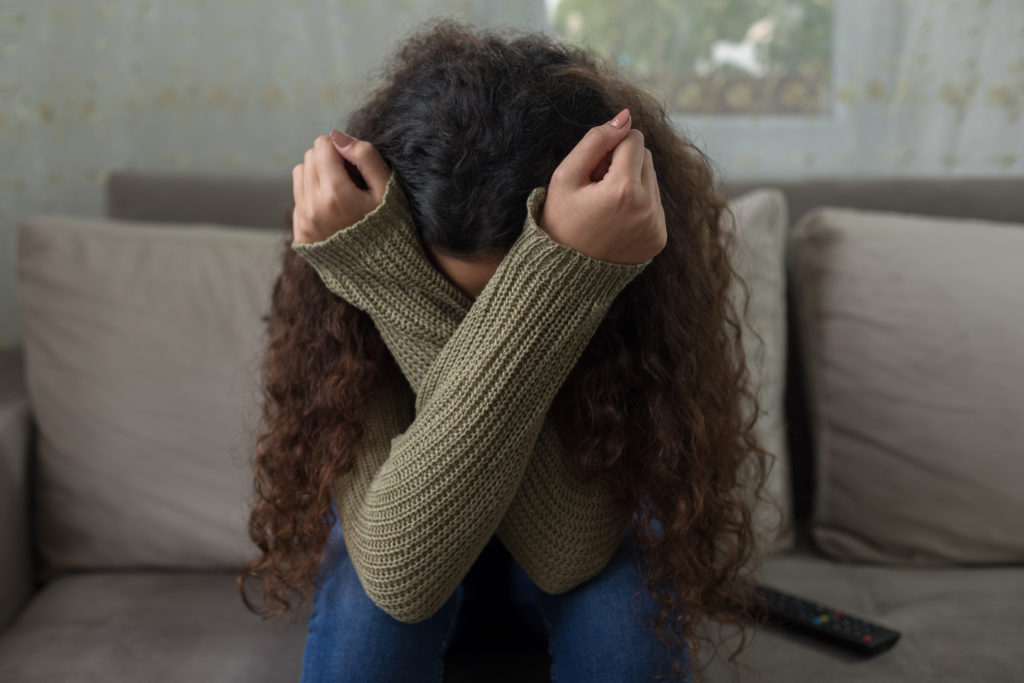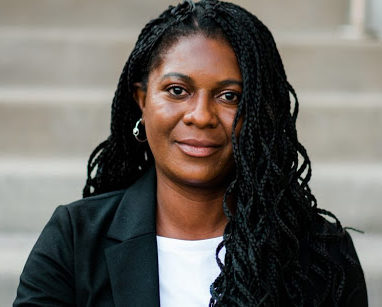Broadening Our Conceptualization of Trauma
By Apryl A. Alexander, PsyD
When examining childhood stress, maltreatment, and trauma, context is important. Moreover, duration, severity, and intensity of the stressor or traumatic event can contribute to one’s well-being. In the Summer 2020 issue of The New Circle, I discussed how racial stress affects young people of color on a frequent basis. In this issue’s article, I will argue that those racial stressors are potentially traumatic incidents.


In my work as a trauma researcher, I have discussed the importance of having a broad conceptualization of different types of trauma that children and adolescents experience. In many studies of childhood trauma or poly-victimization, we capture physical and sexual abuse, neglect, witnessing violence, bullying and cyberbullying, peer and sibling abuse, and even more rare forms of trauma, such as exposure to natural disasters and terrorism. However, despite the much-noted frequency of racial stressors, racial trauma is often missing from current conceptualizations of trauma. Furthermore, clinicians may not be explicitly assessing, or recognizing, the impact racial stress has on trauma in youth.
Racial trauma is an emotional and psychological response to racism-related incidents that are unexpected, perceived as threatening, and result stress. Race-based traumatic stress can cause psychological, emotional, and physical injury and threaten a person’s sense of safety and security.1, 2 In turn, this can trigger a traumatic stress response, including avoidant behaviors, intrusive thoughts, and anxiety and depression. Ultimately, racial trauma can result in symptoms akin to those of post-traumatic stress disorder (PTSD). Racial trauma also incorporates historical trauma in its conceptualization—the collective trauma experienced over time and across generations of groups with shared identities or circumstances involving oppression, marginalization, and trauma exposure.3, 4 The trauma can be a single or recurring event, or set of events, such as colonialism, war, genocide, enslavement, mass incarceration, police brutality, natural disaster, or disease.5 Over the past few decades, the term racial trauma has been applied to colonized indigenous groups across the world, as well as descendants of Holocaust survivors, Black Americans, Japanese American survivors of internment camps, and Armenian genocide survivors, among others. If we are to look at racial trauma through that lens, then we must highlight the severity and intensity with which it impacts underrepresented and marginalized young people.

Racial Trauma Must be Viewed in Context
Adverse childhood experiences (ACEs) are potentially traumatic events that occur in childhood, in which aspects of children’s environments can rupture their sense of safety and bonding, including being raised in a household marked by violence, parental separation, or familial substance use. ACEs assessments focus on childhood experiences of physical, sexual, and psychological abuse, neglect, mental illness and substance use among household members, parental incarceration, and violence against maternal caregivers. Research reveals that traumatic events in childhood can often lead to both mental and physical health consequences, including increased risk of injury, mental health problems, chronic diseases, suicide, and early death. Outcome research on ACEs elucidates the importance of early assessment and intervention for childhood maltreatment and trauma.

Studies of ACEs have found that marginalized groups, such as Black youth, are more likely to report multiple ACEs relative to their white counterparts. Therefore, Black youth face greater health risks and negative mental health outcomes following their exposure to ACEs. Bernard and colleagues (2020) propose a culturally informed adaptation of the ACEs conceptual framework.6 The Culturally Informed ACE (C-ACE) model presents racism as a unique sociocultural factor that contributes to stress-related pathologies among youths of color. This model broadens the ACEs model by incorporating recognition of historical, intergenerational, and contextual effects of racism and how they contribute to health disparities that disproportionately impact Black youths.
What Can We Do?

Researchers and public health officials are examining what we, as a society, can do in order to prevent ACEs, and current evidence tells us a few things can help prevent adverse childhood experiences. For instance, strengthening economic support for families, building better bonds between children and their caregivers, and teaching skills to parents and youth on how to handle stressors and tough emotions. Moreover, researchers are increasingly examining advantageous childhood experiences, also known as the counter-ACEs,7 or protective factors. This research emerged from the notion that less is known about exposure to positive childhood experiences and the extent to which it counters risk factors for unhealthy outcomes in adulthood. Parental warmth and extrafamilial supports are two examples of protective factors that are linked to more adaptive adult lives.
In sum, it is important to understand the societal context in which trauma occurs. Recognizing and whenever possible responding to historical, institutional, and individual racial stress in our conceptualization of youths’ experiences will ensure that the care we are providing is culturally informed.
- Carter, R. T. (2007). Racism and psychological and emotional injury recognizing and assessing race-based traumatic stress. The Counseling Psychologist, 35, 13-105.
- William, M. T., Metzger, I. W., Leins, C., & DeLapp, C. (2018). Assessing racial trauma within a DSM-5 framework: The UConn Racial/Ethnic Stress and Trauma Survey. Practice Innovations, 3(4), 242-260.
- Brave Heart, M.Y.H., DeBruyn, L.M. (1998). The American Indian Holocaust: healing historical unresolved grief. American Indian and Alaska Native Mental Health Research, 8, 56-78.
- Mohatt, N. V., Thompson, A. B., Thai, N. D., & Tebes, J. K. (2014). Historical trauma as public narrative: A conceptual review of how history impacts present-day health. Social Science & Medicine, 106, 128-136.
- Coleman, J. A. (2016). Racial differences in posttraumatic stress disorder in military personnel: Intergenerational transmission of trauma as a theoretical lens. Journal of Aggression, Maltreatment, & Trauma, 25(6), 561-579.
- Bernard, D. L., Calhoun, C. D., Banks, D. E., Halliday, C. A., Hughes-Halbert, C., & Danielson, C. K. (2020). Making the “C-ACE” for a culturally-informed adverse childhood experiences framework to understand the pervasive mental health impact of racism on Black Youth. Journal of Child & Adolescent Trauma. https://doi.org/10.1007/s40653-020-00319-9
- Crandall, A., Miller, J. R., Cheung, A., Novilla, L. K., Glade, R., Novilla, M. L. B.,…Hanson, C. L. (2019). ACEs and counter-ACEs: How positive and negative childhood experiences influence adult health. Child Abuse & Neglect, 96, article 104089. https://doi.org/10.1016/j.chiabu.2019.104089

Dr. Apryl Alexander
Dr. Alexander is an Associate Professor at the University of Denver. She primarily teaches in the Master’s of Forensic Psychology program in the Graduate School of Professional Psychology and supervises students at the Denver Forensic Institute for Research, Service and Training (Denver FIRST). She serves as Director of Denver FIRST’s Outpatient Competency Restoration Program (OCRP), which provides outpatient competency education and restoration for low-risk, court-ordered adult defendants and juveniles. She is also a Faculty Affiliate with the Scrivner Institute for Public Policy. Dr. Alexander is the Co-Founder (with Dr. Ashley Hamilton and Rachael Zafer) and former Co-Director for the University of Denver’s Prison Arts Initiative (DU PAI), which provides therapeutic, educational creative arts programming to incarcerated men and women in Colorado state prisons.

